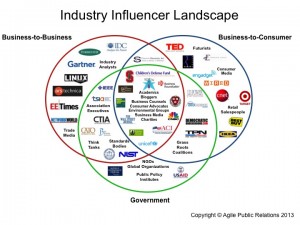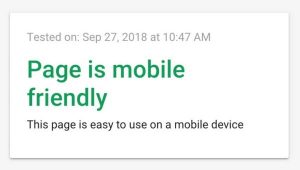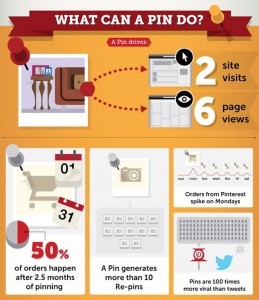
The online marketing industry is increasingly relying with automation to manage their campaigns, and their successes validate the shift. Success in online marketing depends on:
- How much time one spends
- How much effort he puts in
Marketing automation tools are a benefit to inbound marketers. Using such tools saves time, simplifies the work process and reduces errors.
Here’s how digital marketing agencies are levaeraging the automated functionality now available to them.
Managing multiple accounts
Digital marketers have multiple social media accounts. It’s difficult to manage all these accounts individually. You either need increased manpower or a centralized access point from where you can manage these accounts.
The former is more expensive than the latter. The latter, although less expensive, is a bit challenging.
To overcome the challenge, marketers can leverage automation platforms. SMM tools like Hootsuite, Buffer, Viralheat and SproutSocial ease basic operations as well as complex tasks such as user demographic monitoring, online reputation management, measuring virality score, etc.
The biggest benefit of SM account management automation is single platform. Once you log into Buffer or Hootsuite, you can access your LinkedIn, Facebook and Twitter accounts. From a single custom dashboard, you can view how each network is performing. Such dashboards fetch social analytics from different networks and suggest future strategies.
Prospect tracking
Via social media, brands gain access to prospects. There are plenty of relevant and qualified social prospects out there and they are highly likely to turn into leads. But tracking them is challenging.
Marketing automation allows you to evaluate them, weigh the likelihood of their becoming your customers.
Automation and analytics tools enable you to track the activities of social prospects and optimize your social presence for them. Brands fail to engage with prospects for the below-mentioned reasons:
- Not communicating regularly with them
- Not making the interaction meaningful
- Not gauging their lead score
Automated tools like Quintly or Socedo remove communication bottlenecks, make interaction with prospects meaningful and assign lead score to prospects, thereby making it easy for brands to decide which of them are to target. Prospect tracking eventually paves the roads for
Engagement with prospects
Cutting-edge tools have smart approval system, which works like a filter. Prospects are given approval or disapproval based on the lead score assigned to them, for further interaction.
Engagement initiating signals are
- Facebook like, comment and share and comment length
- Retweet, Twitter follow backs and direct messages
- Repin on Pinterest
- Like, comment and share on LinkedIn along with hashtag use
You don’t have to bother. The automation tool you use will intercept all these signals, analyze them and sort the prospect list to find the most likely candidates for conversion pitch.
Your job is to tune the engagement pitch. The pitch should be in accordance with the likes and dislikes, fancies and whims of the prospects. Of course, there will be holistic analysis in the background done by the tool, taking into account link-click through, follow-backs, replies, private messages, upvotes/downvotes and plenty other engagement metrics, making engagement easy.
Facilitate conversion
Engagement with prospects leads to conversion. Automated tools monitor the conversion process, inform marketers about possible errors and offer them other actionable insights throughout the conversion process.
The factors that are critical to sales conversion include
- Marketing campaign scaling
- Strong customer relationship
- Competitive edge
And here’s what automation can do:
According to Gartner Research, by 2020, automation will greatly eliminate the need for human interaction. Automation tools can initiate dialogues with new prospects and reengage with existing prospects in the most opportune time, which boosts conversion. The state of the art analytics allow them.
Unable to scale hinders conversion. Automation streamlines the business process and reduces clutters.
Gaining competitive advantage is tough unless a business adopts automation. What separates automation users from non-users is they report when competitors outgrow them. What follows is tracking competitors to get a sense of the edge that can outbalance the scenario. Once again, only automation tools can achieve this.
Better CRM ROI
Automation platforms integrate CRM tools. This not only connects the marketing and sales team better but tracks CRM. A lot of CRM data go to waste because enterprises don’t automate CRM.
If they use an automation platform that has an integrated CRM, then campaign ROI reporting would be easier, and so would be tracking and increasing revenue.
Automation software allow for CRM-level bi-directional syncing.
What benefits does that yield?
A loop originates and the campaigns created by the platform remains within it. The reporting capability enhances as revenue, marketing speed and marketing decisions map back to the CRM.
A study by Pardot shows buyers want targeted content. The more targeted your marketing messages, the better the outcome is. Without CRM integration, it’s impossible to deliver targeted messages as marketers don’t get a granular view of customer behavior.
Behavioral marketing
I mentioned above about customer behavior. It’s a crucial factor. Marketing around customer behavior yields profitable outcomes. Automation increases its effectiveness.
Here’s what the sales cycle looks like:
Customers browse the features → Read blogs → Check and compare the pricing → Purchase.
Some customers leave after browsing the features. Some leave after viewing the price. Some leave when they don’t find the suitable payment option.
Automation platforms monitor and keep a track of all these touch points. When enterprises obtain the analytics details, they compare the touch points and speculate the reasons behind cart abandonment.
They make changes on their site accordingly.
Email marketing automation
A report shows a staggering 61% of marketers in the US rely on blast emails for lead generation. Less than 5% use automation solution. Automation connects email marketing to behavioral marketing, we’ve just discussed.
Some automation platforms are so advanced that they allow for real-time marketing based on CRM data and customer tracking info. But real-time marketing is not a walk in the park. It requires the sales rep to be street smart. Once you activate drip campaign, emails are automatically sent to customers based on the same data, but in the right time. This way, the email open rate improves, and so does the reply rate.
Summary
The wave of automation is sweeping off the digital marketing industry. Automation is impacting every marketing touchpoint. A marketer can manage multiple accounts, track a prospect, monitor his behavior, make a sales pitch in real time or run a drip campaign. This way, he can grow his business using automation solutions.
It’s impossible to prevent automation from taking over the digital marketing industry. What you can do is to embrace it, understand it and follow the tips shared here. Doing so will increase your odds of success.
Image Courtesy: pixabay.com
Digital & Social Articles on Business 2 Community(72)
Report Post




